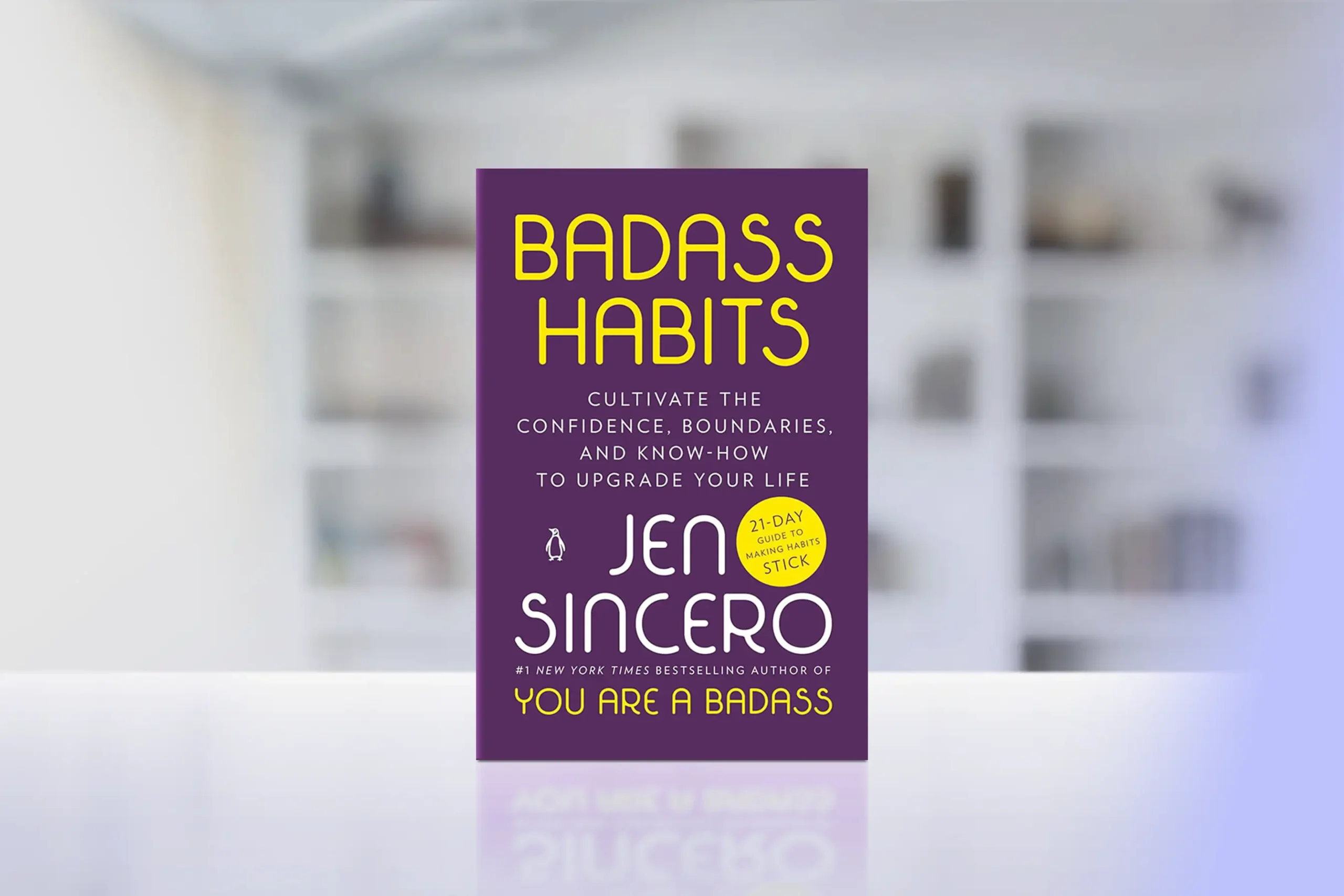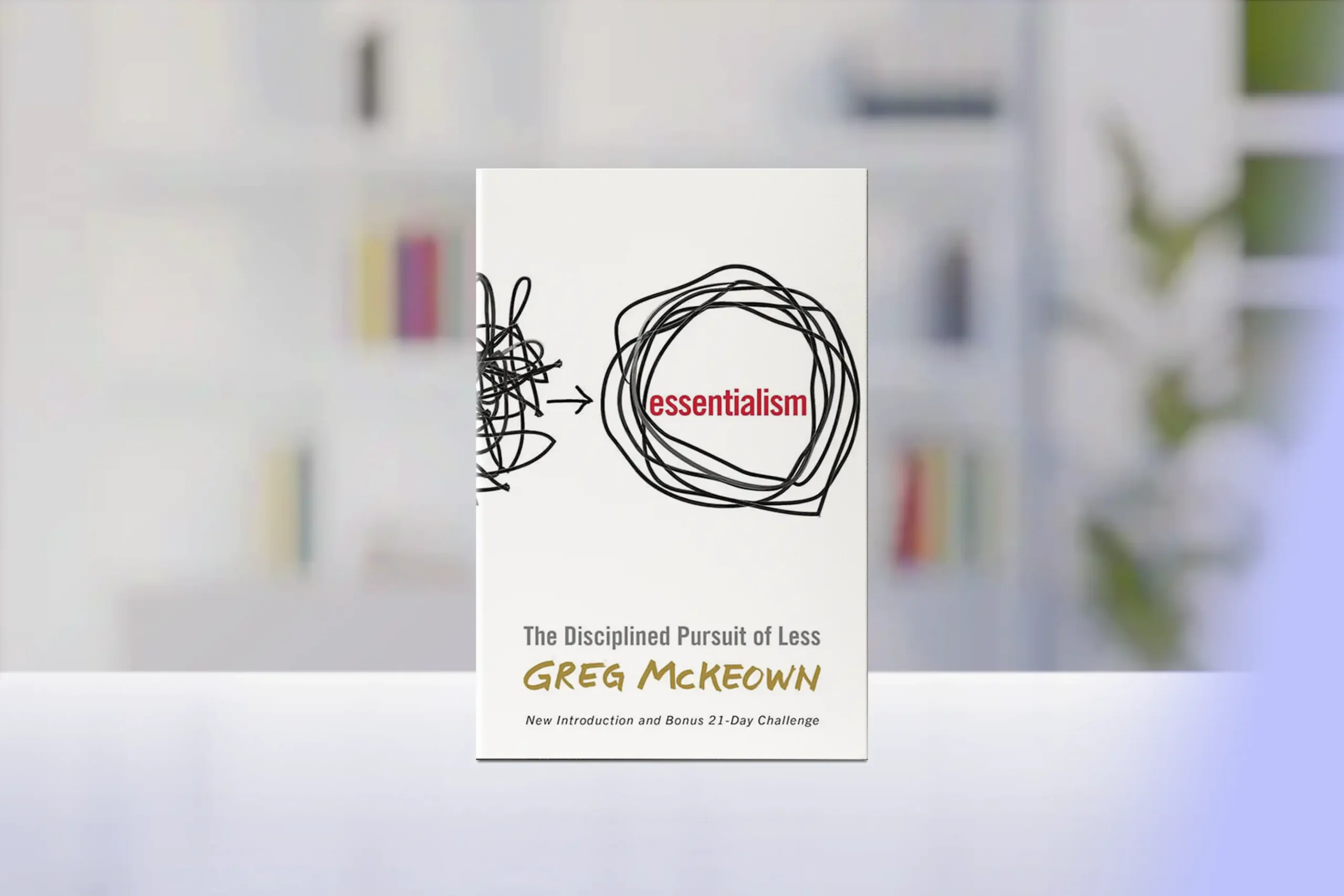Most people don’t fail to change because they’re lazy—they fail because they don’t have the right system. Whether you want to eat better, focus more, or finally get consistent with exercise, building healthy habits that stick for life is the real key.
This guide isn’t about theory—it’s a practical menu of science-backed strategies drawn from top books and behavioral research. Choose the techniques that fit you, and start mastering habits that actually last.
Inside this article:
TL;DR: The Essential Habit Formation Guide
Building healthy habits that stick takes time—usually between two to five months. The key is to start small using the 2-minute rule, making the habit so easy you can’t say no. To make it stick, connect it to something you already do. Your environment matters too—set it up so good habits are effortless and bad ones are harder to reach. Focus on who you want to become, not just what you want to achieve. Track your progress in a visible way to stay motivated. And when setbacks happen—and they will—have a plan, not guilt. Real change comes from smart systems, not more willpower.

1. How Habits Work (Quick Primer)
Understanding how your brain builds habits gives you the power to design lasting change. Think of this as your foundation for mastering habits—once you grasp these core concepts, building healthy habits that stick becomes significantly easier.
What Is a Habit?
A habit is simply a behavior repeated enough times to become automatic. Your brain creates neural pathways through repetition, making these actions require less conscious effort over time. This is why you can drive your regular route home while thinking about something completely different—your brain has automated the process.
The Habit Loop
Charles Duhigg’s research in “The Power of Habit”reveals the three-part loop driving every habit:
Cue → Routine → Reward
The cue triggers your brain to go into automatic mode, the routine is the behavior itself, and the reward helps your brain determine if this particular loop is worth remembering for the future. Master this loop, and you can engineer any behavior change.
Identity-Based Habits
Here’s the game-changer from James Clear’s from his book “Atomic Habits”: focus on who you want to become, not what you want to achieve. Instead of “I want to run a marathon,” think “I’m a runner.” This shift creates internal motivation that sustains long-term change because you’re acting in alignment with your identity, not fighting against it.
Tiny Habits Model
BJ Fogg’s Stanford research proves that lasting change happens through simplicity, not intensity:
Anchor (existing routine) + Tiny Behavior (new habit) + Celebration (immediate positive emotion)
This approach eliminates common barriers that derail most attempts.
Keystone Habits
Some habits naturally trigger positive changes across your entire life. These keystone habits—like exercise, meditation, or journaling—create ripple effects that improve multiple behaviors simultaneously. Identify and build one keystone habit, and watch other areas of your life transform without additional effort.
Angela Duckworth’s research and book “Grit” shows how persistence and passion combine to create extraordinary results. To develop the long-term mindset that supports habit formation, check out Growth Mindset: How to Develop a Mindset for Success and Resilience.
Key Takeaway: Your brain is incredibly adaptable, but it follows predictable patterns. Understanding the habit loop, starting with identity, and focusing on tiny consistent actions creates the foundation for mastering habits and any lasting change you want to make.

2. The Habit Toolkit – Proven Techniques
Here’s what the latest research reveals: your brain is far more adaptable than you think, but it needs the right approach. Choose the strategies that fit your life and personality. You don’t need every technique—you need the right ones for you, applied consistently.
Important Reality Check: Recent comprehensive studies debunk the popular “21-day myth.” Real habit formation actually takes 59-154 days on average, with huge individual differences. This isn’t discouraging—it’s liberating. You can stop feeling guilty about not mastering habits in three weeks and focus on building sustainable systems that work for your unique brain and life.
2.1 Start Small & Make It Easy
Based on: Leading behavioral research + cutting-edge neuroplasticity studies.
Your brain creates lasting change through repetition, not intensity. The biggest breakthrough from neuroscience: habits form by building strong neural pathways through consistency, not willpower. This is why starting ridiculously small works so well.
Apply the “2-minute rule”—scale any habit down to something laughably easy:
- Want to read more? Start with one page
- Want to exercise? Do two push-ups.
- Want to meditate? Try 30 seconds of deep breathing
Research shows this isn’t just motivational advice—it’s how your brain actually wires new behaviors.
The Anchor Method: Link tiny habits to routines you already do automatically:
- “After I brush my teeth, I’ll do five squats”
- “After I pour my coffee, I’ll write one sentence in my journal.”
This technique leverages existing neural pathways instead of creating entirely new ones, making formation 40-50% faster.
Cal Newport’s “Deep Work” demonstrates how focused, deliberate practice creates remarkable results. For strategies on maintaining concentration while building habits, explore How to Step Out of Your Comfort Zone and Experience Real Growth.
Celebrate Every Win: Immediately after completing your tiny habit, do something that makes you feel good—smile genuinely, fist pump, or say “Yes!” This isn’t silly; it’s brain science. That positive emotion helps your brain tag the behavior as beneficial and worth repeating automatically.
2.2 Advanced Habit Stacking & Temptation Bundling
Based on: Stanford behavioral research + behavioral psychology studies.
Classic Habit Stacking uses the formula:
- “After [current habit], I will [new habit].”
But research reveals you can supercharge this approach.
Strategic Stacking Examples:
- “After I sit down at my desk, I’ll write my top three priorities”
- “After I put my phone on the nightstand, I’ll set out tomorrow’s workout clothes”
- “After I start my coffee maker, I’ll do my gratitude practice”
Temptation Bundling (proven in randomized trials): Pair immediately rewarding activities with beneficial behaviors. “I only listen to my favorite podcast while walking” or “I only watch Netflix while folding laundry.” This hijacks your brain’s desire for instant gratification to support long-term goals.
The Power of Context: Research shows habits linked to consistent times and locations become automatic 2.3 times faster than flexible ones. Your brain loves predictability.
2.3 Environmental Design & Choice Architecture
Based on: Behavioral design research + environmental psychology studies.
Here’s the game-changer: your environment shapes behavior more powerfully than your willpower. Recent studies show environmental modifications create lasting change in 70% of participants compared to only 30% for willpower-based approaches.
Make Good Habits Effortless:
- Place workout clothes beside your bed
- Keep healthy snacks at eye level, junk food out of sight
- Put your journal next to your coffee maker
- Set up your meditation space in advance
Add Friction to Bad Habits:
- Delete social apps from your phone (keep them on a tablet)
- Store tempting foods in hard-to-reach places
- Keep your phone charger in another room overnight
- Use app timers and website blockers
For comprehensive strategies on optimizing your environment for success, read our detailed guide on Building a Wellbeing Routine: Habits for Mental and Physical Health.
The 20-Second Rule: Making a behavior 20 seconds easier or harder can dramatically change your likelihood of doing it. This tiny adjustment leverages how your brain conserves energy.
2.4 Smart Commitment & Social Accountability
Based on: Behavioral economics research + loss aversion studies.
Commitment Devices work because people hate losing things 2.5 times more than they like gaining them. Create systems where breaking your habit costs you something valuable—money, social reputation, or personal streaks.
High-Impact Examples:
- Habit contracts with friends or family
- Financial commitments (donate to a cause you dislike if you break the streak)
- Social accountability through apps or check-in partners
- Public commitments on social media
The Research Secret: Studies show that combining social and financial accountability doubles your success rate compared to going it alone.
Keith Ferrazzi’s “Never Eat Alone” reveals the profound impact of relationships on personal achievement. To strengthen the social foundation that supports your habits, explore Building and Maintaining Healthy Relationships.
Community Power: Join groups focused on similar goals. Research reveals habits can spread through social networks up to six degrees of separation, and having high-status peers modeling the behavior significantly increases your success.
2.5 Identity-Based Transformation & Purpose Connection
Based on: Identity psychology research + personality studies.
The Identity Shift: Every action is a vote for the type of person you’re becoming. Instead of “I want to lose weight,” think “I’m someone who takes care of their health.” Instead of “I should read more,” embrace “I’m a reader.”
Personality Insights from Research:
- High conscientiousness? You’ll excel with detailed planning and environmental organization
- High neuroticism? Focus on stress management and emotional regulation first, then add habits
- Low self-control? Rely on environmental design rather than willpower—it’s more effective anyway
Simon Sinek’s “Start with Why” explores how purpose drives sustainable action. For deeper exploration of connecting your habits to meaning, read Finding Your “Why”: Exercises to Uncover Your Life Purpose.
Connect to Your Why: Link daily habits to your deeper values and long-term vision. When you understand how a 10-minute morning walk connects to being present for your family or advancing your career, consistency becomes natural.
2.6 Strategic Rewards & Dopamine Management
Based on: Neuroscience of motivation + reward system research.
Immediate Celebration: Your brain learns through dopamine, which peaks during anticipation and completion of rewarding activities. Celebrate the instant you complete your habit—smile authentically, do a victory dance, or say something positive about yourself.
Advanced Reward Strategies:
- Morning boost: Schedule habits early when your brain’s reward circuits are most responsive
- Variable rewards: Occasionally add special celebrations to maintain excitement
- Progress rewards: Celebrate weekly and monthly streaks, not just daily completion
What NOT to Do: Avoid external rewards like “I’ll buy myself something if I exercise for a week.” Research shows these backfire by reducing intrinsic motivation over time.
2.7 Keystone Habits & Ripple Effects
Based on: Behavioral network research + habit cascade studies.
Some habits naturally trigger positive changes across your entire life. Focus on one powerful keystone habit rather than trying to change everything at once.
Proven Keystone Habits:
- Exercise: Often leads to better eating, sleeping, and productivity
- Meditation: Improves emotional regulation, focus, and decision-making
- Journaling: Enhances self-awareness, planning, and stress management
- Morning routines: Create structure that influences your entire day
Charles Duhigg’s “The Power of Habit” provides detailed case studies of keystone habits transforming organizations and individuals. For more on creating positive cascades in your life, explore The Power of Habit: How to Build and Break Habits for Growth.
The Network Effect: Recent research shows habits operate through behavioral networks. When you strengthen one connection, it can automatically strengthen related behaviors. This is why focusing on one keystone habit often creates seemingly effortless improvements elsewhere.
2.8 Optimized Progress Tracking
Based on: Meta-analysis of tracking methods + measurement research.
The Tracking Revolution: Meta-analysis of tracking methods reveals a surprising finding—objective tracking tools show significant behavioral change, while subjective tracking (like mood ratings) shows no effect. Your memory is unreliable, but data doesn’t lie.
Digital vs. Analog:
- Use digital for simple, quantifiable habits: Steps, water intake, exercise frequency
- Use analog for complex behaviors: Quality of relationships, creative work, spiritual practices
The Visual Chain Method: Mark an X on a calendar for each day you complete your habit. Research shows this simple technique leverages your brain’s pattern-recognition systems and creates powerful motivation to maintain streaks.
Tracking Timeline: Habits follow predictable patterns—rapid improvement for 12 weeks, then gradual leveling. Don’t be discouraged when progress slows; this is when the habit becomes truly automatic.
2.9 Advanced Implementation Intentions
Based on: Implementation science + “if-then” planning research.
The Formula:
- “If [situation], then I will [behavior].”
This simple technique bypasses conscious decision-making and programs automatic responses to environmental triggers.
Powerful Examples:
- “If I sit down at my computer, then I’ll immediately write my three priorities”
- “If I feel stressed, then I’ll take three deep breaths before responding”
- “If it’s 7 PM, then I’ll put my phone in the other room and read”
Why It Works: Research shows implementation intentions create medium to large effect sizes because they automate the decision-making process. You’re not relying on willpower in the moment—you’ve already decided what to do.
The Morning Advantage: Studies reveal morning practices show superior habit strength development, likely due to reduced decision fatigue and optimal hormone patterns. Start your most important habits early.
Hal Elrod’s “The Miracle Morning” demonstrates how morning routines can transform your entire day. To design your optimal morning sequence, check out The Art of Effective Goal Setting and Achievement.
Key Takeaway: You don’t need willpower—you need the right techniques for mastering habits. Environmental design beats motivation, tiny habits compound into big changes, and objective tracking keeps you honest about your progress.

3. Habit System Comparison – Pick What Fits You
Choose the system that matches your personality and current situation. Perfectionists often benefit from Tiny Habits‘ emphasis on starting small. Visual learners gravitate toward streak tracking. People facing major transitions find keystone habits most effective for creating widespread positive change.
| Method | Core Idea | Best For |
|---|---|---|
| Atomic Habits | Identity + environment + compounding effort | General life improvement |
| Tiny Habits | Anchor + tiny step + celebrate | Low motivation, busy people |
| Power of Habit | Habit loop: cue → routine → reward | Habit replacement |
| Grit | Passion + perseverance over time | Long-term goals |
| GTD | Capture, clarify, organize, review | Productivity, mental clarity |
| Don’t Break the Chain | Build visible momentum through daily habit streaks | Visual thinkers, creatives |
| Implementation Intentions | “If X happens, then I will Y” | Habit consistency |
| Keystone Habits | High-impact habits that shift identity & routines | People who want major ripple effects |
For understanding how different personality types approach behavior change, Carol Dweck’s “Mindset” offers valuable insights into fixed vs. growth orientations that influence habit success.
Key Takeaway: There’s no one-size-fits-all approach to building healthy habits that stick. Match your method to your personality and situation for the highest chance of success.

4. Common Habit-Building Mistakes (And What to Do Instead)
The most successful habit builders embrace imperfection and prioritize consistency over intensity. Missing one day doesn’t destroy progress—missing two consecutive days starts a negative pattern. Develop a recovery protocol before you need it.
| Mistake | Why It Fails | Better Strategy |
|---|---|---|
| Starting too big | Too much friction → burnout | Tiny Habits: 2-minute version |
| Depending on motivation | It fades | Environment design, friction control |
| Abstract goals | No action plan | GTD “Next Action” method |
| Stacking unrelated habits | Mental load = friction | Stack habits that naturally follow each other |
| Ignoring identity | No internal motivation | Identity-based habits: become the type of person |
| Not tracking progress | No feedback loop | Use visual tools (apps, habit calendars) |
| Falling off = giving up | “All or nothing” mindset | Use the “Don’t Miss Twice” rule |
| Trying to eliminate habits by willpower | Brain hates losing reward | Replace the routine, keep cue and reward |
Brené Brown’s “Daring Greatly” explores how vulnerability and self-compassion support lasting change. For strategies on bouncing back from setbacks, read Building Resilience: Bouncing Back from Life’s Challenges.
Key Takeaway: Mistakes are part of the process, not proof that you’ve failed. Learn to recognize and avoid these common pitfalls, then get back on track quickly when you slip.

5. Customizing Habits for Different Lifestyles
For Busy Professionals
Stack habits into your existing work schedule rather than adding more time commitments. Practice gratitude while your computer boots up, do desk stretches between meetings, or take walking phone calls. Use transition moments—arriving at work, lunch breaks, end of day—as natural habit anchors.
Automate morning and evening routines as much as possible. Lay out clothes, prep meals in advance, and create consistent sequences requiring minimal decisions. Calendar reminders work initially, then transition to natural timing cues.
For Parents & Caregivers
Anchor your habits to children’s routines, which are often more consistent than adult schedules. Practice mindfulness during bedtime stories, do stretches while kids play, or listen to educational podcasts during school pickup. Include family members when possible—evening walks, family gratitude sharing, or morning movement routines everyone enjoys.
This approach builds connection while supporting your personal development, making habits feel integrated rather than selfish.
For the Exhausted/Burned Out
Focus on restoration habits that replenish rather than deplete energy. Prioritize water intake, morning sunlight, and gentle movement. These foundational habits support overall wellbeing and create capacity for other positive changes.
Make goals “so small they’re silly” during recovery periods. One push-up, one paragraph read, one sentence written. The goal is maintaining the neural pathway while respecting your current limitations. Self-compassion becomes part of your system, not an exception to it.
For ADHD or Low Focus
Keep habits short and introduce variety to maintain interest. Your brain thrives on novelty, so rotate between different versions of the same habit or change contexts regularly. Use visual timers to create clear boundaries, and consider “body doubling”—working alongside someone else, even virtually—for accountability and focus.
Reduce decision fatigue by simplifying choices. Create if-then scripts: “If it’s Monday, then I meditate. If it’s Wednesday, then I journal.” This structure supports executive function without feeling restrictive.
The research in “Self-Compassion” by Kristin Neff shows how treating yourself with kindness accelerates growth rather than hindering it. For comprehensive stress management strategies, explore Emotional Wellbeing: Managing Stress, Anxiety, and Burnout.
Key Takeaway: Your habits should fit your life, not the other way around. Customize your approach based on your unique circumstances, challenges, and energy levels.

6. Troubleshooting & Habit Resets
When a Habit Breaks:
Return to the most minimal version—what BJ Fogg calls the “floor” behavior. If your 30-minute workout breaks, do five minutes. If journaling stalls, write one sentence. This maintains the neural pathway while rebuilding momentum.
Use “fresh start” moments like Mondays, new months, or life transitions to relaunch habits. Research shows people feel more motivated to begin new behaviors during these temporal landmarks because they create psychological clean slates.
Track consistency, not perfection. Aim for 80% completion over time rather than expecting 100%. This mindset reduces shame and frustration that often derail attempts entirely.
If You’re Bored:
Introduce novelty while maintaining the core behavior. Try different meditation techniques, exercise locations, or times of day. Sometimes boredom signals a need for variety rather than abandonment.
Reconnect with your deeper purpose. Why did this habit matter initially? How does it align with who you’re becoming? Refreshing motivation often resolves boredom more effectively than changing behavior.
If You’re Burned Out:
Temporarily reduce intensity while maintaining the cue-response pattern. Replace 30-minute workouts with 10-minute walks. Substitute three journal pages with three sentences. Keep the habit alive during recovery periods.
Shift toward passive or restorative versions. Replace intense exercise with gentle stretching, swap productivity habits for mindfulness practices.
For guidance on navigating major life changes while maintaining positive habits, explore Navigating Life Transitions: How to Reassess Your Purpose During Major Changes.
Key Takeaway: When habits break or feel boring, adjust rather than abandon. The solution is usually less intensity, not giving up entirely.

7. Real-Life Habits (By Goal)
Health & Fitness
- Movement Integration: Place workout shoes beside your bed, do 10 squats before showering, take phone calls while walking, use stairs when available, try wall push-ups during TV commercial breaks
- Nutrition Support: Drink water before each meal, eat fruit with breakfast, prep healthy snacks weekly, use smaller plates, practice eating without screens for mindful consumption
Mental Health & Mindset
- Mindfulness Practices: Write three gratitudes after brushing teeth, take deep breaths when sitting down, replace morning phone scrolling with brief meditation, practice loving-kindness during commutes
- Stress Management: Set hourly posture check alarms, use transition rituals between tasks, create 15-minute daily worry windows, practice progressive muscle relaxation before bed
Productivity
- Daily Organization: Write three priorities during breakfast, use Pomodoro timers after opening laptops, create tomorrow’s to-do list before ending workdays, clear workspace before important projects
- Deep Work: Eliminate distractions before focused sessions, batch similar tasks together, take two-minute breaks every 25 minutes of concentrated work
Relationships
- Daily Connection: Text friends positive messages with morning coffee, establish weekly partner check-ins, give genuine daily compliments to colleagues, practice active listening by reflecting back what you hear
- Community Building: Attend monthly social events, maintain relationships before needing support, share meals with others regularly, volunteer for meaningful causes
BJ Fogg’s “Tiny Habits” provides the scientific foundation for starting small and celebrating wins. For comprehensive approaches to specific life areas, explore Physical Wellbeing: Nutrition, Sleep, and Exercise for Optimal Health or Productivity Hacks for Busy Professionals.
Key Takeaway: Start with just one or two habits from one category. Success breeds success, and mastering one area creates momentum for others.

8. Build Your Own Habit Plan (Interactive Guide)
Use this framework to design your first habit using proven principles:
Fill-in-the-Blank Habit Builder:
My Tiny Habit:
(Make it specific and doable in 2 minutes)
Anchor Routine:
(Something you already do consistently every day)
What Will Trigger It?:
(The specific moment or cue that reminds you to act)
What’s My Celebration?:
(How you’ll feel good immediately after completing it)
What’s the Backup Plan If I Miss It?:
(Your minimum viable habit for challenging days)
Weekly Check-In Questions:
- Which days did I complete my habit successfully? What made those days different?
- When I missed my habit, what obstacles appeared?
- How can I make this habit 10% easier next week?
- What positive changes am I noticing elsewhere in my life?
- How is this habit helping me become who I want to be?
David Allen’s “Getting Things Done” emphasizes the power of written systems for managing complex goals. For deeper exploration of goal achievement and personal planning, check out How to Set and Achieve Financial Goals That Align with Your Life Purpose.
Key Takeaway: A written plan turns good intentions into concrete action. Use this framework to design your first habit, then repeat the process as you build your ideal life one small habit at a time.
Final Takeaways
The person you want to become already exists within you—mastering habits is simply the process that reveals them.
You don’t need motivation—you need a system.
The most successful people aren’t more disciplined; they’ve designed better systems that make good choices easier and bad choices harder.
Tiny changes → identity shift → long-term results.
Every small action is a vote for the type of person you’re becoming. These votes accumulate into identity changes that make future improvements feel natural and authentic.
Pick one method that fits you and start today.
Whether you choose Tiny Habits for simplicity, Atomic Habits for comprehensiveness, or any other approach, consistency beats perfection every time.
Progress over perfection always wins.
Aim for 80% consistency rather than 100% perfection. The goal is building lasting change, not maintaining impossible standards.
Want to start your first habit today?
Choose one technique from this guide and commit to it for seven days. Remember: the goal isn’t perfection, it’s consistency. Your future self will thank you for the small action you take right now.
The most powerful moment for change isn’t tomorrow or next Monday—it’s this moment. What tiny habit will you begin with?
Related articles
Building Self-Discipline for Personal Growth
Develop the mental strength to follow through on your commitments and create lasting change.
Time Management: Mastering the Art of Prioritization
Learn how to structure your day to support new habits while maintaining productivity and balance.
The Mind-Body Connection: Aligning Physical and Mental Health
Discover how physical habits influence mental wellbeing and vice versa for holistic personal development.
Emotional Intelligence: How to Improve Self-Awareness and Relationships
Build the emotional foundation that supports consistent habit formation and resilience during setbacks.
Further reading
“The Compound Effect” by Darren Hardy
Demonstrates how small, consistent actions create long-term results through compounding.
“Switch: How to Change Things When Change Is Hard” by Chip Heath and Dan Heath
Framework for overcoming resistance to change by understanding the psychology of decision-making.
“The 7 Habits of Highly Effective People” by Stephen R. Covey
Classic guide to character-based habits that create effectiveness in personal and professional life.
“Mindset: The New Psychology of Success” by Carol S. Dweck
How our beliefs about ability and intelligence affect your capacity for growth and habit formation.





